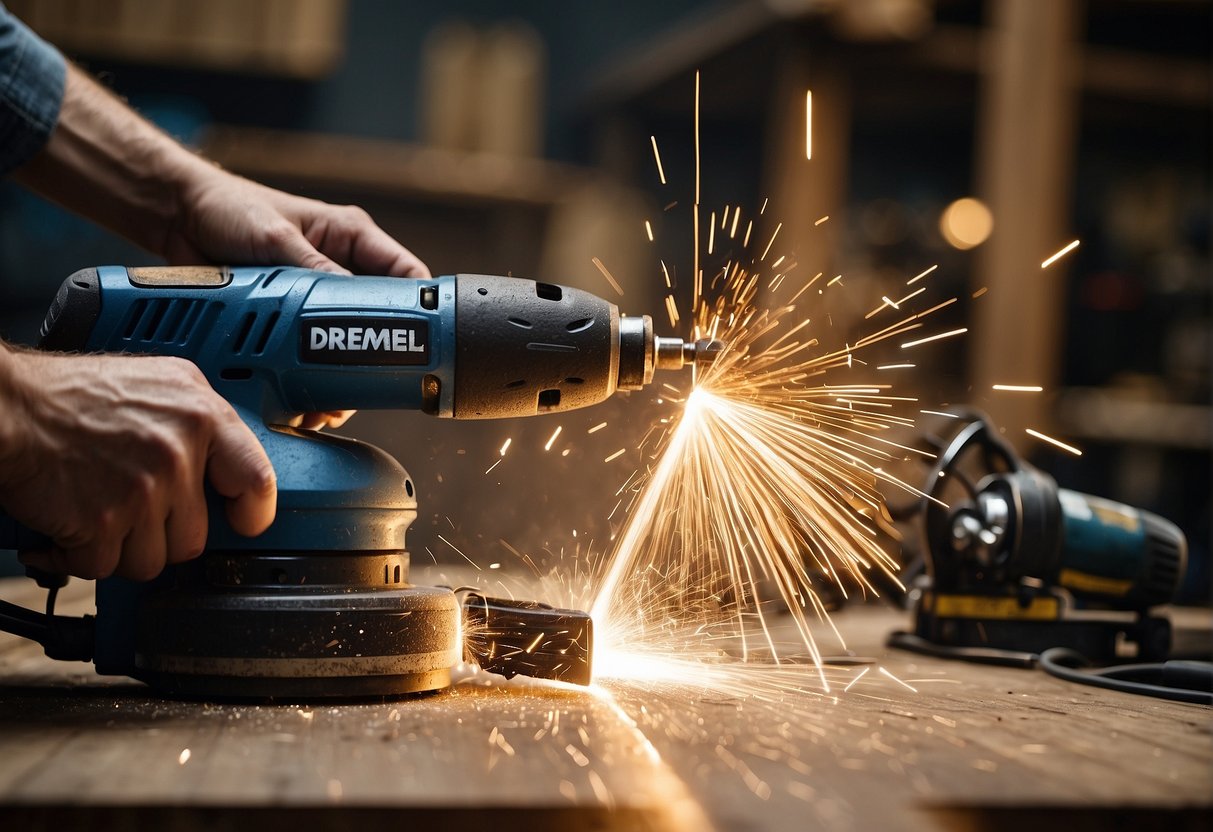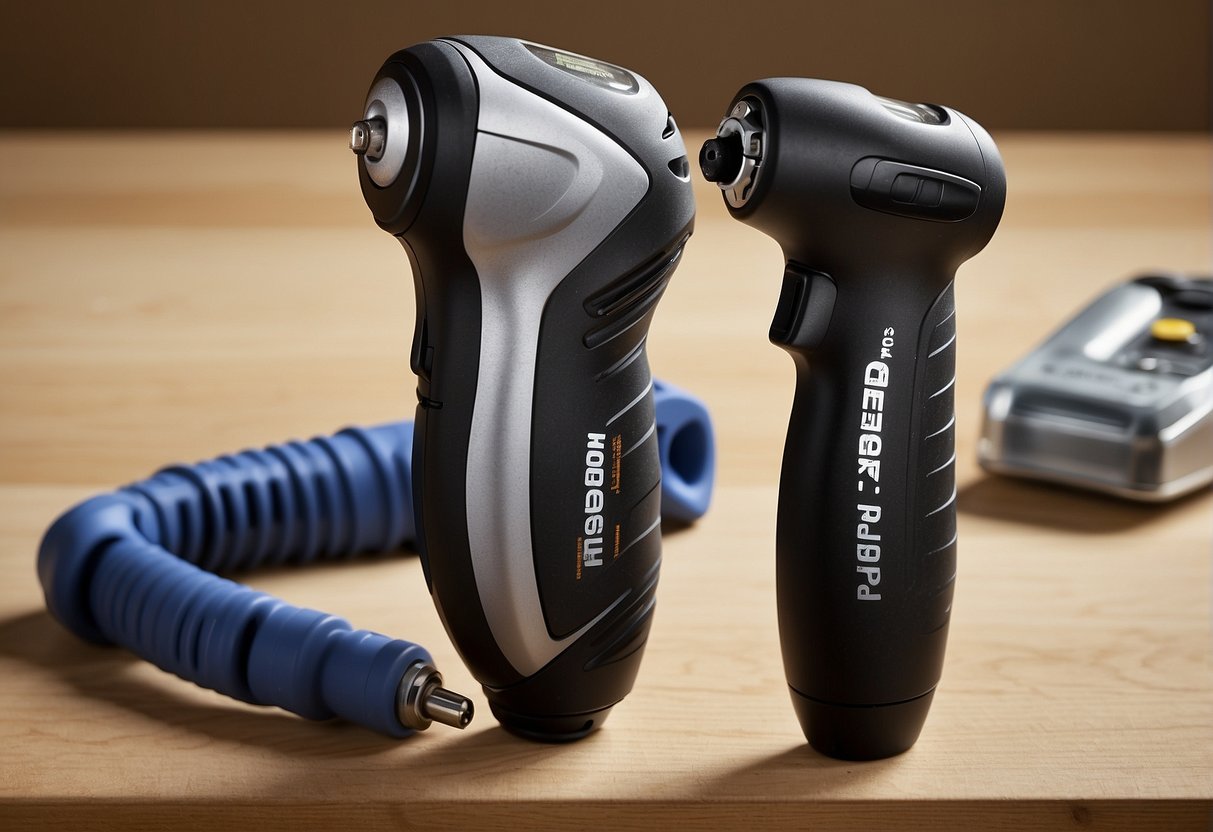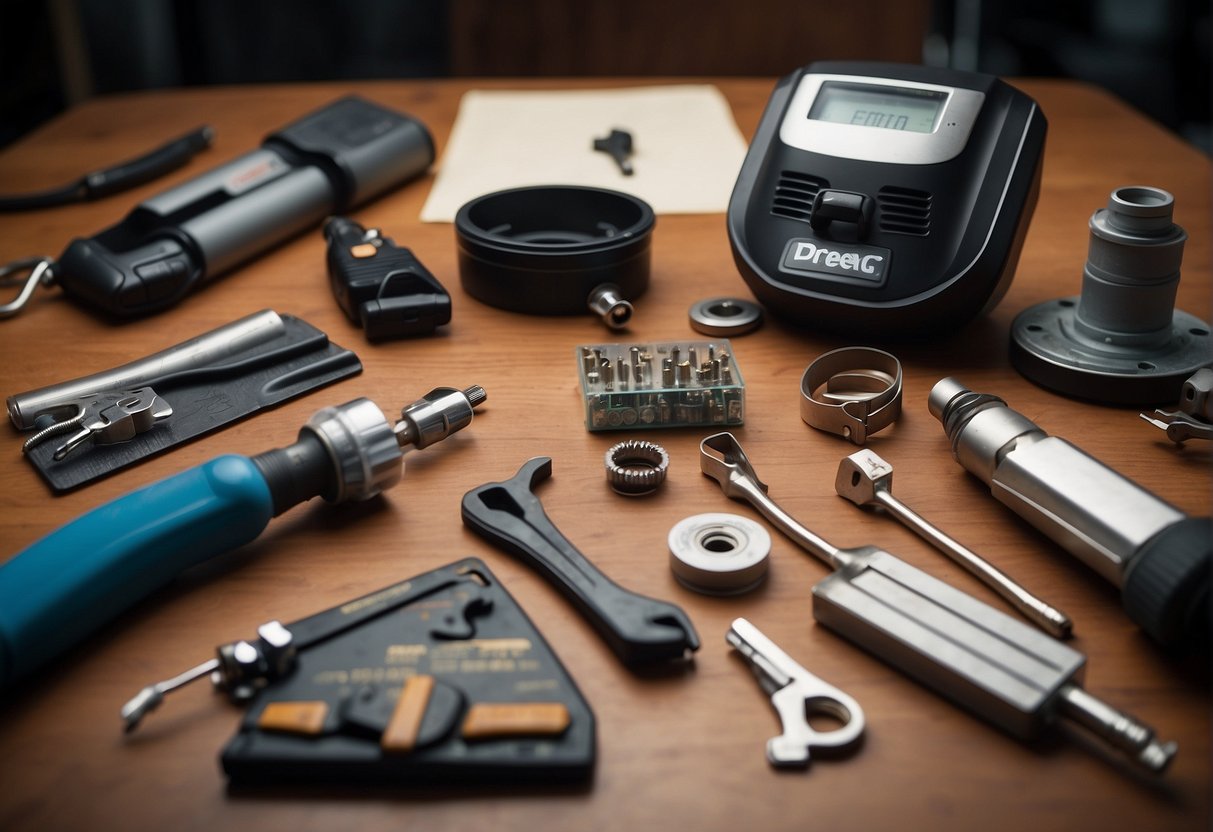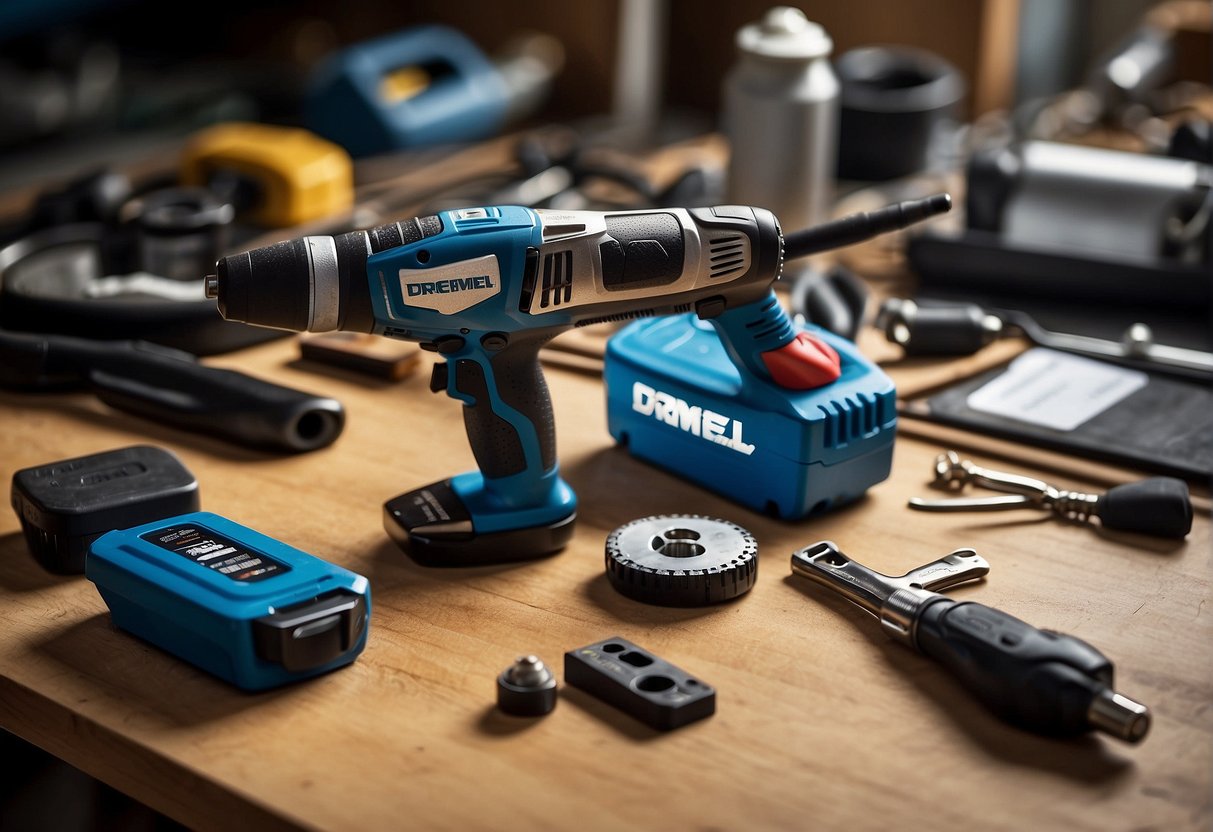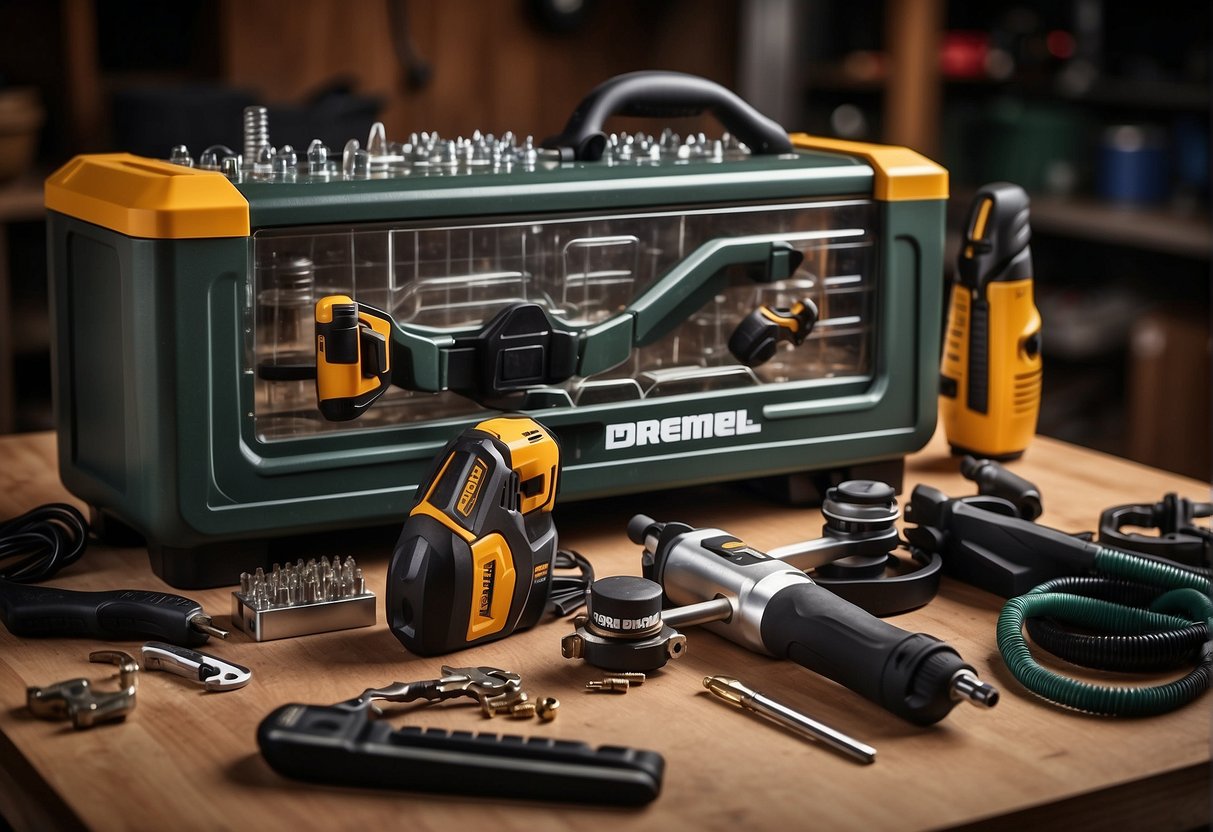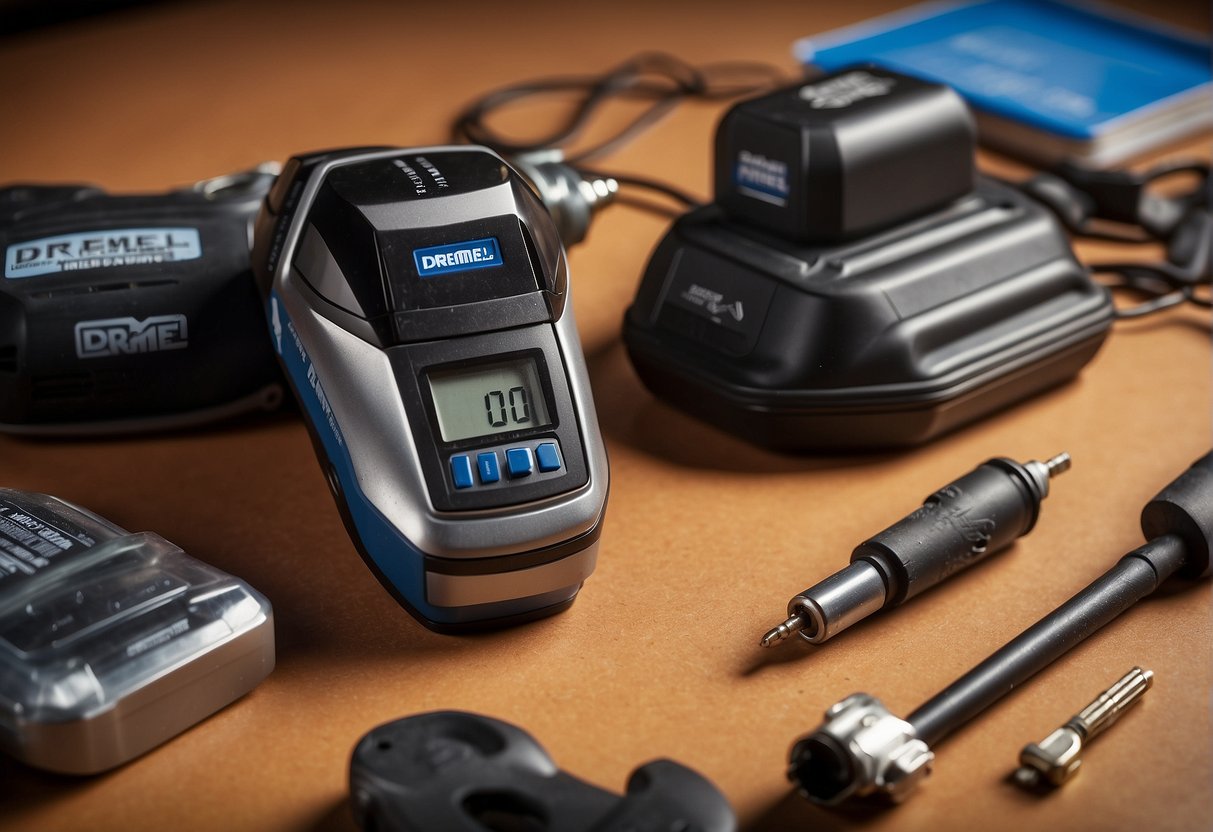I have been using rotary tools for years, and I can say that they are a must-have for any DIY enthusiast, woodworker, or metalworker. Two of the most popular rotary tools on the market are the Dremel and the Rotozip. Both tools are versatile, powerful, and can handle a variety of tasks, but they have some key differences that set them apart.
Understanding Rotary Tools
Before we dive into the differences between the Dremel and Rotozip, it’s essential to understand what rotary tools are and how they work. Rotary tools are handheld power tools that use a rotating cutting or grinding accessory to cut, sand, polish, carve, and grind various materials. They are lightweight, compact, and can be used for a wide range of applications, from home improvement to jewelry making.
Comparing Performance and Power
When it comes to performance and power, the Dremel and Rotozip are both impressive rotary tools. The Dremel is known for its precise and accurate cuts, thanks to its straight cutting bit. On the other hand, the Rotozip uses a spiral-shaped cutting bit, which makes it ideal for cutting through tough materials like drywall, tile, and cement board. The Rotozip is also larger and more powerful than the Dremel, making it a better choice for heavy-duty tasks.
Key Takeaways
- Rotary tools are versatile and powerful handheld power tools that can be used for a wide range of applications.
- The Dremel and Rotozip are two of the most popular rotary tools on the market, and they have some key differences that set them apart.
- The Dremel is known for its precise and accurate cuts, while the Rotozip is larger and more powerful, making it ideal for heavy-duty tasks.
Understanding Rotary Tools
Rotary Tool Basics
Rotary tools are handheld power tools that are versatile and can be used for a variety of tasks such as cutting, grinding, sanding, and polishing. They are compact and lightweight, making them easy to handle and maneuver. Rotary tools are powered by electricity and have a high-speed motor that rotates a bit or accessory at high RPMs.
Rotary tools come with a variety of accessories that can be attached to the tool’s chuck, including cutting wheels, sanding discs, polishing pads, and grinding stones. The accessories are interchangeable, which means you can switch them out depending on the task at hand.
Dremel and Rotozip Overview
Dremel and Rotozip are two popular brands of rotary tools. Both brands are known for their high-quality tools and accessories that are designed to make tasks easier and more efficient.
Dremel rotary tools are designed for precision work and are ideal for tasks that require fine detail work such as carving, engraving, and etching. They are also great for sanding and polishing.
Rotozip rotary tools are larger and more powerful than Dremel tools. They are designed for heavy-duty tasks such as cutting through drywall, tile, and other tough materials. Rotozip tools are also great for making large cuts and holes in wood and metal.
Both Dremel and Rotozip tools come with a variety of accessories that can be used for a wide range of tasks. Dremel accessories are designed for precision work, while Rotozip accessories are designed for heavy-duty tasks.
In conclusion, rotary tools are versatile and can be used for a variety of tasks. Dremel and Rotozip are two popular brands of rotary tools that are known for their high-quality tools and accessories. When choosing between the two, it’s important to consider the type of tasks you will be performing and choose the tool that is best suited to your needs.
Comparing Performance and Power
When it comes to performance and power, both Dremel and Rotozip have their own strengths and weaknesses. In this section, I will compare the two tools based on their motor power and speed, as well as handling and control.
Motor Power and Speed
One of the main differences between Dremel and Rotozip is their motor power and speed. Dremel’s rotational speed is considerably higher than Rotozip’s. Dremel’s maximum spindle speed goes up to 350,000 RPM, compared to Rotozip’s range of 15,000 to 30,000 RPM. The higher rotational speed is well-suited to operations like polishing, fine carving, and etching, all typical applications for Dremel. On the other hand, Rotozip has up to a 6-amp motor, which makes it more than three times more powerful than Dremel’s regular blender.
Handling and Control
When it comes to handling and control, Dremel and Rotozip have different designs. Dremel is corded, while Rotozip offers both corded and cordless options. Dremel is also lighter, weighing just over 1 pound, while the Rotosaw is heavier at over 3 pounds. The lighter weight of the Dremel makes it easier to handle and control, especially for extended periods. Dremel also has a comfortable grip that makes it easy to hold and maneuver. Rotozip, on the other hand, has a more substantial 6-amp motor and improved handle design, which provides better control and stability during use.
In summary, Dremel and Rotozip have different strengths when it comes to performance and power. Dremel’s higher rotational speed makes it well-suited for fine carving and etching, while Rotozip’s more powerful motor is better for heavy-duty applications. When it comes to handling and control, Dremel’s lighter weight and comfortable grip make it easier to handle, while Rotozip’s improved handle design provides better control and stability.
Versatility and Applications
When it comes to versatility, both Dremel and Rotozip are capable of handling a wide range of materials. However, there are some differences between the two tools in terms of material compatibility and range of applications.
Material Compatibility
Dremel is known for its compatibility with a wide range of materials, including wood, drywall, metal, glass, plexiglass, and plastic. On the other hand, Rotozip is primarily designed for cutting through drywall, but it can also be used on other materials such as wood and metal.
Range of Applications
Both Dremel and Rotozip can be used for cutting, sanding, grinding, polishing, cleaning, engraving, carving, woodworking, and metalworking. However, Dremel is more versatile in terms of its range of applications. It can be used for a wider variety of tasks, including intricate detailing, precision cutting, and engraving. Rotozip, on the other hand, is better suited for heavy-duty cutting, grinding, and sanding tasks.
Overall, both Dremel and Rotozip are versatile tools that can handle a wide range of materials and applications. However, Dremel is more versatile in terms of its range of applications, while Rotozip is better suited for heavy-duty cutting and grinding tasks.
Accessories and Attachments
When it comes to accessories and attachments, both Dremel and Rotozip offer a wide range of options to choose from. These accessories and attachments can increase the versatility of the tool and allow you to tackle a wider range of tasks.
Dremel vs. Rotozip Accessories
Dremel offers a vast selection of accessories, including cutting bits, routing, drilling, and sanding woods. One of the most useful accessories is the Dremel Bits, which are available in a variety of shapes and sizes. These bits can be used for carving, engraving, and etching. Dremel also has a dust vault, which can be attached to the tool to collect dust and debris while working.
Rotozip also has a range of accessories, including oscillation, plunge cut, and grout removal kit. The direct drive attachment is a specialized attachment that can be used to cut through hard materials like metal and concrete. Rotozip also has a depth gauge, which allows you to set the depth of cut when using the plunge cut attachment.
Specialized Attachments
Both Dremel and Rotozip offer specialized attachments that can be used for specific tasks. Dremel has a range of attachments, including the Plunge Router Attachment and the Flex Shaft Attachment, which can be used for detailed work and hard-to-reach areas. Rotozip also offers a range of attachments, including the ZipMate Attachment, which allows you to use Rotozip bits with a Dremel tool.
When it comes to accessories and attachments, both Dremel and Rotozip offer a wide range of options to choose from. Whether you need to cut through wood, metal, or concrete, there is an accessory or attachment that can help you get the job done.
Safety and Maintenance
Operating Safely
When using power tools like Dremel or Rotozip, safety should be the top priority. Always wear protective gear like safety glasses, gloves, and a dust mask. Before using the tool, make sure it is in good condition and all parts are secured. Keep the work area clean and free from any obstacles that may cause accidents.
When using a Dremel or Rotozip, make sure to follow the manufacturer’s instructions and recommendations. Always use the right attachment for the job and avoid using the tool for purposes other than what it is designed for. Keep the tool away from children and pets, and never leave it unattended while it is still running.
Tool Maintenance
Proper maintenance of your Dremel or Rotozip is essential to ensure its longevity and performance. Regularly clean the tool and its attachments to prevent dust and debris buildup. Keep the tool dry and store it in a cool, dry place when not in use.
Check the battery or charger regularly for any signs of damage or wear. Replace any damaged or worn parts immediately to prevent accidents or further damage to the tool. Always use the recommended battery or charger for your Dremel or Rotozip to ensure its quality and performance.
As a DIYer, homeowner, or contractor, it is important to take care of your power tools to maximize their usefulness and lifespan. By following these simple safety and maintenance tips, you can ensure that your Dremel or Rotozip remains a reliable tool for precision cutting, grinding, and sanding.
Frequently Asked Questions
What are the primary differences between a RotoZip and a Dremel tool?
The primary difference between a RotoZip and a Dremel tool is their size and weight. RotoZips are larger and heavier than Dremels, making them more suitable for heavy-duty tasks such as cutting drywall, floors, ceilings, and tile. Dremels, on the other hand, are smaller and more versatile, making them ideal for intricate tasks such as engraving, carving, and polishing.
Can Dremel accessories be used interchangeably with a RotoZip?
No, Dremel accessories cannot be used interchangeably with a RotoZip. While both tools use similar attachments, they are not interchangeable due to differences in the size and shape of the attachments.
What specific tasks is a RotoZip most suitable for?
A RotoZip is most suitable for heavy-duty tasks such as cutting through drywall, wood, and tile. It is also useful for grinding, sanding, and shaping materials. Due to its size and power, a RotoZip is an excellent tool for remodeling and construction projects.
How do RotoZip and Dremel compare in terms of power and versatility?
In terms of power, RotoZips are more powerful than Dremels. They have a higher RPM and can handle heavy-duty tasks with ease. However, Dremels are more versatile and can perform a wide range of tasks, from engraving and carving to polishing and sanding.
Are RotoZip bits compatible with Dremel rotary tools?
No, RotoZip bits are not compatible with Dremel rotary tools. While they may look similar, the size and shape of the bits are different, making them incompatible with each other.
In what scenarios would a RotoZip be preferable over a traditional router or die grinder?
A RotoZip would be preferable over a traditional router or die grinder in scenarios where precision and control are required. Due to its size and shape, a RotoZip can reach tight spaces and perform intricate cuts with ease. It is also more versatile than a traditional router or die grinder, making it a useful tool for a wide range of applications.

Hi, I’m Sal Muller of Tooltrip.com. My DIY experience led me to understand essential power tools for home projects. Tooltrip.com guides enthusiasts and professionals in choosing right tools for any job. I provide concise top tool reviews for easier, efficient DIY.

